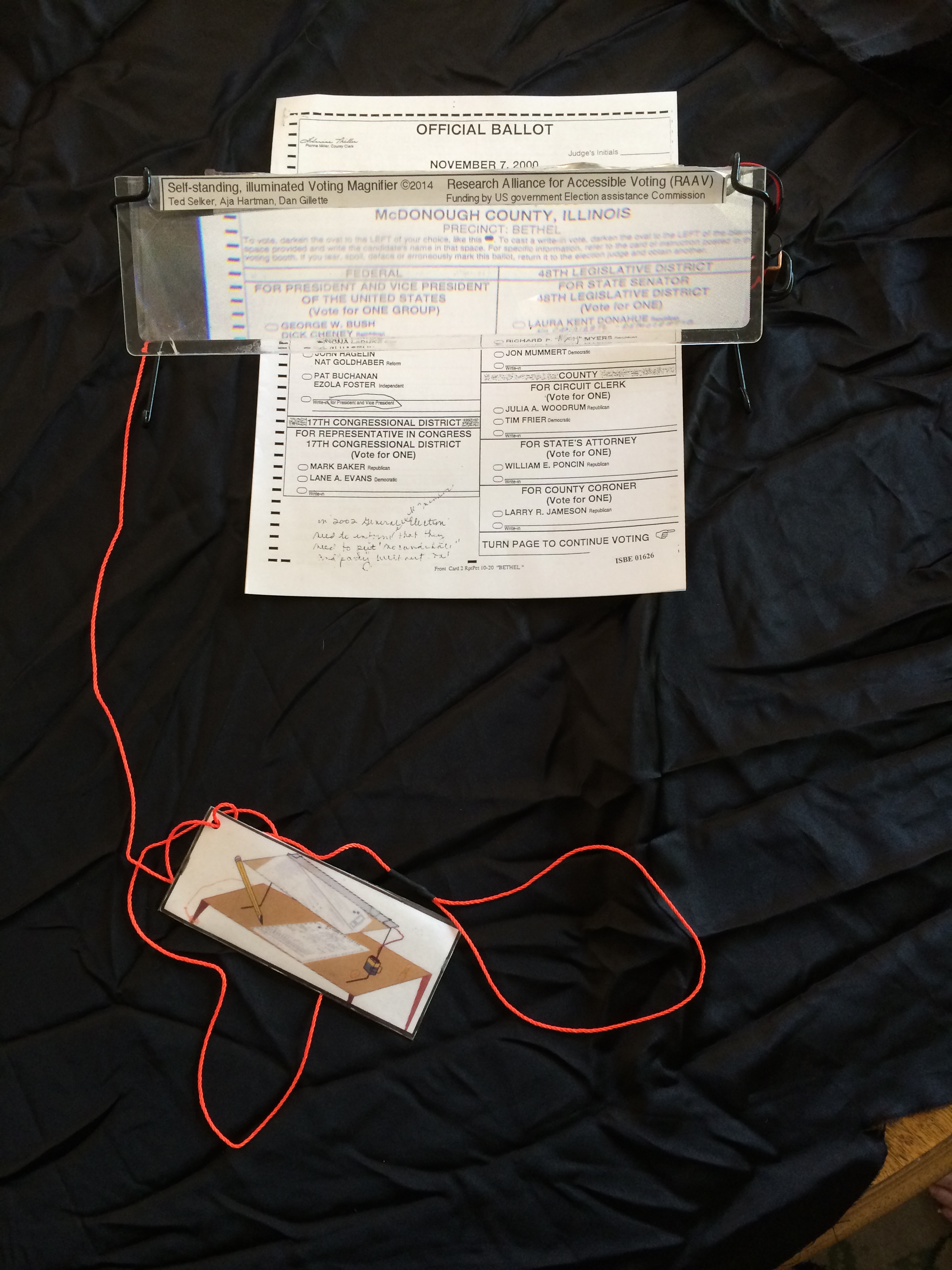We have created and continue to refine a web-based polling place application to help design, setup and document polling places. The necessity for this app was made clear in the recommendations of the PCEA report. Here is a live demo (only works with Chrome browser).
Demo guidelines:We are working on ways to add overlays to websites and electronic ballots to improve focus for individuals with reading and cognitive disabilities. While we would prefer all websites and ballots to be properly designed, we realize that many are not and that remediation on the county level is tricky due to available expertise and funding. The scrim concept is intended to improve the browsing and data entry for ballots, registration websites and similar activities. Check out the quick demo movie, included in this video. (another version is a specialized PDF ballot marker)
The website accessibility analysis tool started as a student project in the CMU accessible voting class. The focus is on providing visualization of access problems to website designers based on existing online tools (traditionally, website accessibility analyzers provide only textual output that requires a strong understanding of web standards and accessibility principals to fully understand). We have extended its feature set by turning it into a Chrome plug-in and refining the visualizations. Here is a short demo movie.

CSUN Extended Abstract Improving Write-in Candidate Text Entry for Audio-only Voting Interfaces
March 17 2014
This paper reports on the difficulties and approaches for text entry of arbitrary words such as names that might not be known by the system that it is typed in. In particular, ballot entry for the write-in feature in audio-only voting systems, consists of names that are not necessarily known by the ballot; it must be typed in particularly by the voter from their memory. For those cases the difficulty of going through typing are most severe, because, one the system is used rarely, two the words are not in the English language [1], and three the typist must get feedback to know that they accurately typed the word. We experimented with different design approaches for the text entry interface; alphabets were separated into groups of letters, reading of the letters sped up within each group and slowed for the delimiter to the next group. Two experiments show using a simplified key interface input and speedup with delimiters doubled the speed of arbitrary name input speed.